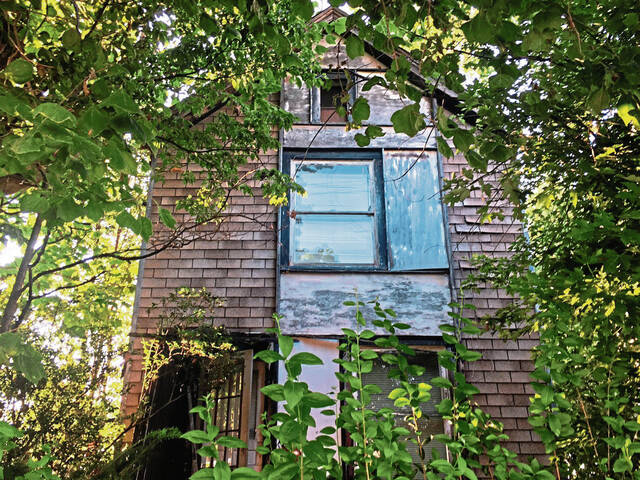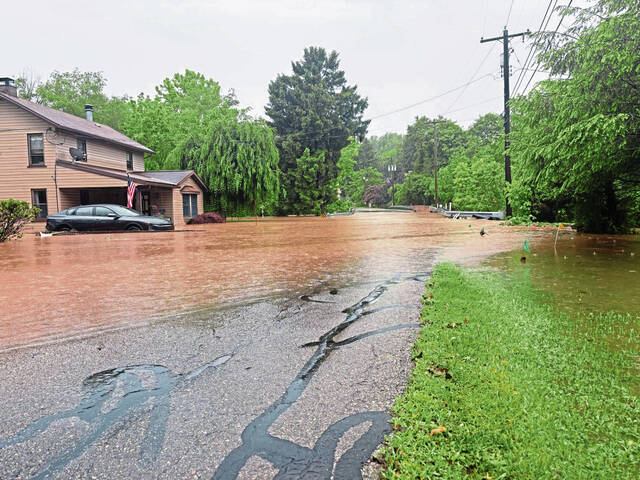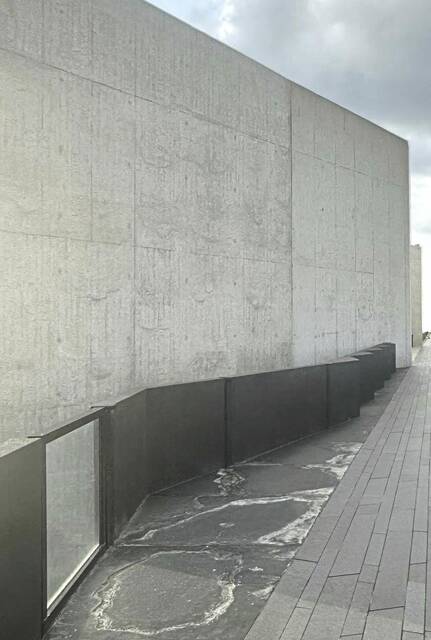Preventing properties that are in fair condition from deteriorating is among recommended strategies for Latrobe to tackle blight.
A recent Westmoreland County inventory of the city’s 3,912 properties indicated that 57, or 1.4%, are rated in poor condition, while 368, or 9.4%, are in fair condition, according to Brian Lawrence, executive director of the county’s redevelopment authority and land bank.
“Prevention has got to be the M.O. (modus operandi) for Latrobe, to make sure these fair properties don’t become poor ones,” Lawrence told city council this week as he shared preliminary findings and recommendations for a blight reduction plan he hopes to deliver to council by March 31.
“Bricks, siding or gutters falling off and porches caving in” are among signs of a building that is in poor condition, Lawrence said.
He said peeling paint was the most common problem among Latrobe buildings with a fair rating, listed for 270 properties, while cracked bricks or rotting wood was documented on 193 buildings.
He suggested the city consider helping property owners tackle those problems with initiatives such as a “paint the town” program and a power washing and gutter cleaning brigade.
Lawrence noted clogged, failing gutters allow water intrusion — one of the chief contributors to deterioration of buildings constructed from wood.
Another suggestion is that Latrobe officials adopt a “friendly letters campaign” for initial signs of property deterioration to encourage owners to fix the problem early and not wait for multiple issues to develop.
“You should be friendly at the outset, helping people do the right thing with their property,” Lawrence said.
He added that other tactics for catching problems with buildings before they progress into blight would be to require an exterior inspection of a property before any transfer in ownership and invoking a law that would require the new owner to bring it up to code standards within a set time after taking possession.
According to Lawrence, a law passed last year could allow city officials to keep those whose existing properties have tax or code problems from bidding on Latrobe properties at tax sales.
He also suggested passage of an ordinance for ticketing “quality of life” violations, such as deteriorating paint and yards that are overgrown or filled with debris.
Potential strategies for addressing the city’s worst blighted properties include seeking block grant money to rehabilitate low- to moderate-income housing and applying to a federally funded, county-administered program for demolishing run-down buildings.
Through the demolition program, Latrobe recently razed a dilapidated house it acquired at 29 W. Harrison Ave. Two other dwellings are targeted to be torn down on Avenue A and in the 600 block of Main Street.
Tax delinquency has a limited association with blight in Latrobe, Lawrence said. It’s a factor with just four poor-rated properties and three that are in fair condition.
The Latrobe inventory indicated 91% of the city’s poor-rated properties are residential, 84% have an individual as sole owner and 42% likely are rental properties. Among properties in fair condition, 85% are residential, 83% have individual owners and 51% likely are rentals.
Two owners accounted for eight of the poor-rated properties between them, and 17 owners collectively were involved with 47 properties with fair ratings.
Lawrence noted four sections of the city where blight is of the highest concern, based on the number and proximity of poor- and fair-rated properties: an area bordering Route 981 southwest of Loyalhanna Creek; the entire area between the Norfolk Southern rail line and the Loyalhanna; an area bordered roughly by the downtown business district to the north, Lincoln Avenue to the east, Latrobe Elementary School to the south and Legion Keener Park to the west; and the section of town on either side of Ligonier Street, bordered by Harrison Avenue on the north.
Lawrence said blight “detracts from the community’s character. It increases crime and reduces property values. It becomes a billboard, in and of itself, of decline.
“It spreads like a cancer. You have to find ways to contain it before it goes any farther.”
While developing the blight reduction plan, Lawrence and his staff have been working with a city task force that includes Mayor Eric Bartels, Councilman Ralph Jenko, City Manager Michael Gray, code enforcement officer Shannon Cypher Hart and representatives from the Latrobe Community Revitalization Program, local foundations, banks, landlords and Realtors.
That blight task force met in January and will meet again in March, Lawrence said.
The county’s first annual blight remediation summit is planned for April 22 in the events center at Westmoreland County Community College’s main campus near Youngwood. To register, visit eventbrite.com and search for Blight Boot Camp 2022.








